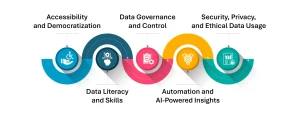Virtual Reality for Employee Training and Development

Virtual reality training for employee development can be an important step in a company’s success. It can give employees an opportunity to practice skills in a safe environment while reducing injury rates and improving productivity. As more companies invest in this technology, the number of people who learn the skills they need to succeed increases.
Increased productivity
Virtual reality (VR) is fast gaining traction in the workplace. It has been used to improve workflows and training. However, how does VR affect productivity? In a recent study, researchers explored this question by creating an empirically tested framework.
The resulting framework is composed of three main needs: cognitive, environmental, and behavioural. They were then applied in an exploratory study on teamwork and productivity. Specifically, the researchers focused on how virtual reality can augment productivity for employees in the context of task work.
To explore the VR-as-a-training-means-mire, the researchers observed a group of knowledge workers from a large social network company over two months. The employees executed individual productivity activities in a virtual workspace, called a Workroom, on a weekly basis. During these activities, they were observed and videotaped. Their audio recordings were transcribed verbatim.
The authors then compared the VR productivity model with the productivity model of the real world. Assuming that all six core values are a minimum, they found that 3% of VR learners were able to learn all of the core values.
These findings have implications for firms. For example, VR could improve the onboarding process for new hires. Companies that do not have an effective onboarding process tend to have lower employee retention rates. Also, ineffective onboarding can hinder productivity.
Finally, the authors discovered that VR can promote teamwork and collaboration. Teams able to multitask in VR were able to complete tasks faster. This is due to the fact that a distraction-free environment allows for energised teamwork. A virtual reality headset is also less heavy than traditional desktop-based options.
In addition, the benefits of a VR training course were clear, including improved consistency, lower downtime, and a more realistic view of the job experience. Although it is not a substitute for classroom-based learning, it is an excellent way to prepare for the work world.
Reduced injury rates
When it comes to workplace safety, virtual reality training is one of the most effective ways to reduce injury rates. By simulating a variety of real-world scenarios, VR allows employees to practice emergency response methods and to learn how to handle various situations in an immersive, realistic manner.
Virtual reality training helps employees feel confident and competent. It also improves knowledge retention and enables companies to train staff in a variety of different environments.
Big names such as Volkswagen, Google and Amazon have already begun using VR to teach a variety of hard and soft skills. They are relying on VR training to increase employee engagement and reduce costs. These companies are also applying it to onboarding, on-the-job training, and regular safety certifications.
According to IDC, the total commercial investment in virtual reality is expected to reach $4 billion by 2024. As more companies adopt VR, it is likely to become a standard form of training for many jobs.
A study from Stanford University found that trainees who completed VR training sessions performed better than those who completed instructional videos. The participants had a greater rate of accuracy, as well as a faster time to completion.
One company, Connect the Dots (CTD), a Norwegian company, developed a VR world for use with health and safety training. They have already trained 10,000 employees in VR.
One of the biggest benefits of VR for employee training and development is its ability to provide detailed visual feedback. In addition, most VR sessions are monitored in real time, so trainees can get immediate feedback. This type of feedback provides a more realistic learning experience than traditional corporate training.
Safe space to learn high-stakes skills
If you are a business owner, you may be looking for ways to leverage the power of virtual reality (VR) to upskill your workforce. While it may not be the easiest way to introduce a new task or skill, VR can be an interesting tool to improve employee retention and performance.
Virtual reality training can also help your employees practice skills that are important in their work, including empathy and communication. It can also allow them to better understand and cope with challenging situations.
A few companies are already using VR to train their workers. Walmart and Lowe’s are two examples. Using the technology to upskill employees can increase their motivation and make the learning process easier.
VR can also be used to improve safety in high-risk situations. For example, race car drivers have used VR to perfect their skills in a safe environment.
VR also helps new employees get a feel for the company culture. New hires can be given a tour of multiple locations, as well as an introduction to their managers.
Another use of VR in training is to reduce the cost and time of onboarding new employees. A recent study found that companies that implemented VR to onboard new employees were able to decrease the number of days their employees had to spend on training.
VR can also be an effective method to train workers in another country. In addition to helping them learn new skills, it can also reduce travel expenses.
Although the technology is still in its infancy, VR is becoming more affordable. The cost of computing power continues to decline, as does the cost of storage.
To make VR training work, you need to plan your program well. Identify your goals and focus on those. You can also add a gamification element to keep your team motivated. Gamification can include a points system or avatars for different employees.
Improved designer workflow
VR has the potential to improve designer workflow and employee training and development. It can save time and money while increasing employee performance. The technology has been around for a while, but it’s catching on quickly. There are several ways to get started.
One of the most common ways to get started is with a virtual reality onboarding and training program. These programs are a great way to demonstrate the value of a VR-enabled workforce. Using a VR onboarding program will help employees be more engaged and productive. By allowing them to experience virtual office environments and interact with co-workers on a more personal level, they will feel more confident in their jobs.
As a business leader, you’re likely to be interested in the benefits of a VR onboarding program, but you may be concerned about a possible negative reaction from staff members. Fortunately, there are a few things you can do to avoid any unwanted backlash. First, you should be sure to use the right hardware. You should also set up a monitoring and evaluation program to evaluate how well the program is doing.
There are several ways to do this, including allowing employees to loan out headsets to colleagues. This can reduce downtime while still keeping the training content fresh. If you choose to buy new devices, make sure they are clean and disinfected before each use. Luckily, you can find standalone headsets that are much more affordable than desktop-based options.
The most important part of any training program is making sure that it is effective. This means setting the proper expectations and taking a close look at the quality of the course material. Also, it’s important to make sure that the time allotted for the training program is being used efficiently. For example, if you are training a remote worker, you will likely want to set up a few smaller sessions over the course of a few weeks instead of a single long one.
Increased retention
The use of virtual reality (VR) for employee training and development has been reported to improve retention rates. This is because VR provides a realistic simulation of the work environment.
It can also help employees learn faster. According to PwC’s study, VR-based simulations can help learners get up to speed in half the time it would take to do so with classroom-based or e-learning.
With virtual reality training, workers can be exposed to real-world situations and challenges, which can help them build their communication skills. Additionally, it can help them develop empathy and understand the customer.
A number of organizations are using VR for employee training. Walmart has used it to reduce the amount of time its associates spent on training. Another example is Sprouts, a company that needed to hire thousands of new employees quickly.
VR training helps new employees learn to feel more confident and comfortable in their new position. It can even allow them to take a tour of the office or multiple business locations. They can also get an introduction to the company and the people in charge.
It can also be a cost-effective alternative to instructor-led training. It can reduce training costs by as much as 52 percent. In addition, VR-based simulations can help managers practice difficult conversations.
To ensure that the VR training is effective, it’s important to have regular content reviews and to make adjustments as necessary. Some companies loan headsets to employees so they can practice on their own.
Although it can be difficult to find out how much of a difference VR can make, it is clear that it can have a positive impact on employee retention.







